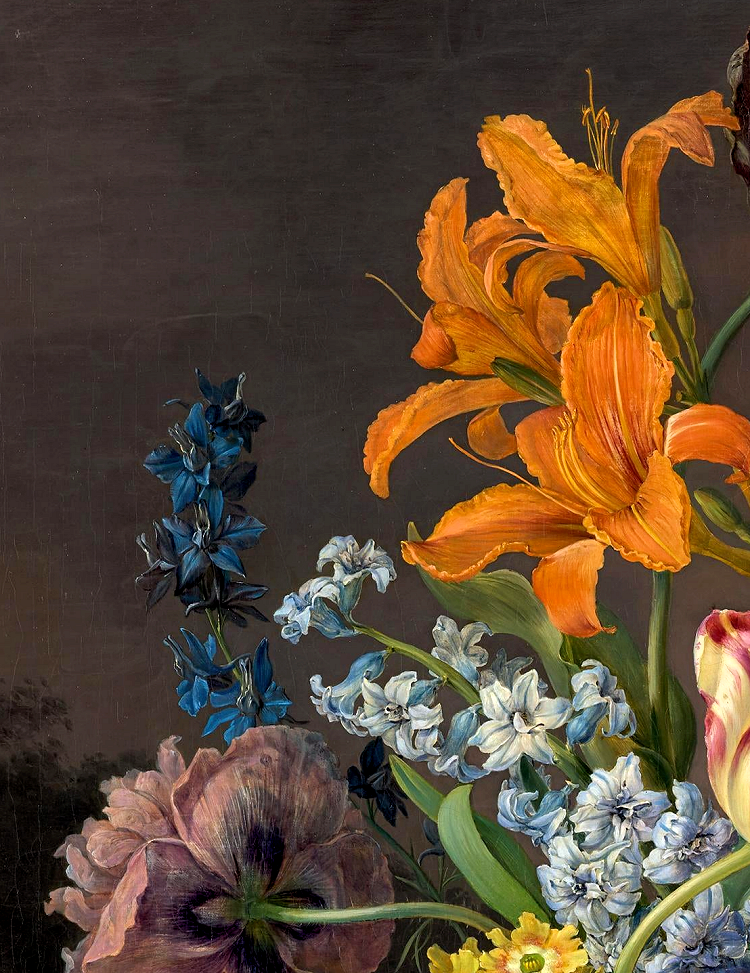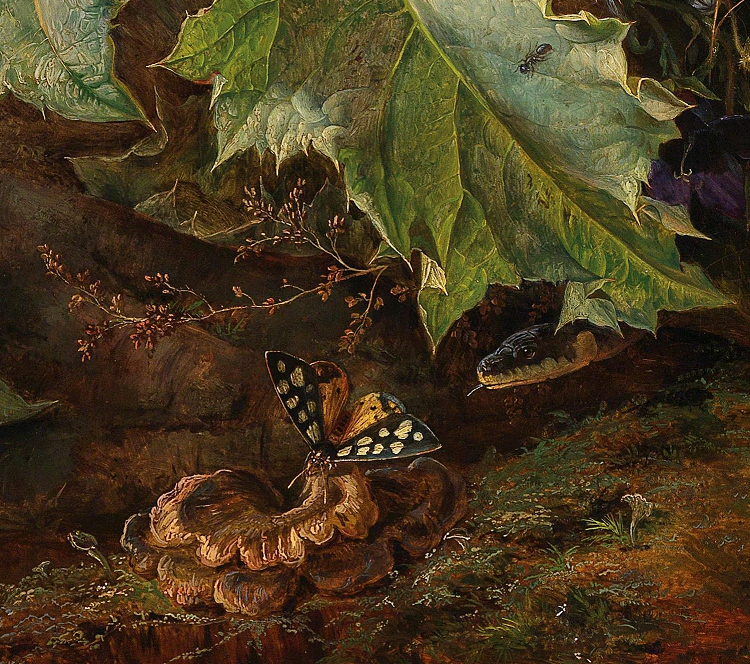 |
| Blumenstück, circa 1838. |
*
 |
| Großes Distelstillleben, circa 1850s. One of several variations on this subject. |
*
Franz Xaver Gruber (29 September 1801, Vienna - 12 April 1862, Vienna), Austrian flower and genre painter, given the nickname
Distelgruber in response to his best-known still-lifes which featured thistles. He was accepted as a student at the Vienna Academy at the age of fifteen and, in 1822, he received the Gundel Prize for flower painting. In order to further his education, he also attended lectures by the celebrated botanist and chemist Joseph Franz Freiherr von Jacquin. From 1835 he was a professor at the
Manufakturschule while founding his own private elementary drawing school. Between 1839 and 1859, on a commission from Prince Metternich, he created a collection in watercolor of camellias. And for Emperor Ferdinand I he painted numerous orchids and palm species in watercolors; the plants of the Schönbrunn palm house serving as models. His "Great Thistle Still Life with Poppies and Butterflies" was a success at the Paris World's Fair in 1855, and he subsequently made several versions of it, thus inspiring his
Distelgruber nickname. His two siblings - brother Carl Franz Gruber (1803 - 1845) and sister Katharina, married name Hawelek (1807 - 1859) - were also flower painters.
Not to be confused with the Austrian primary school teacher and church organist of the same name, famous for being the composer of "Stille Nacht, heilige Nacht" ("Silent Night").

















No comments:
Post a Comment